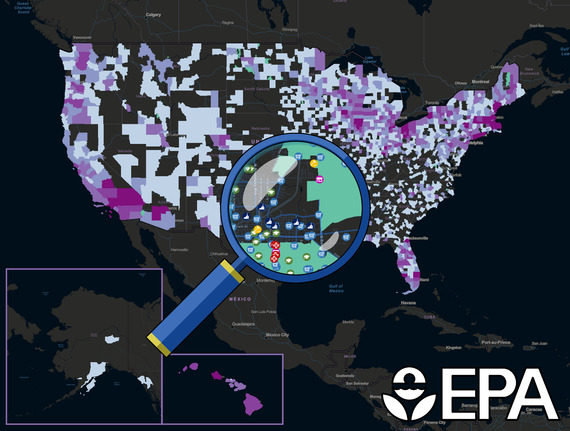|

EPA’s Excess Food Opportunities Map, first released in 2018, displays facility-specific information for potential generators and recipients of excess food in the industrial, commercial and institutional sectors, including estimates of excess food for most generators. The map is a useful resource allowing businesses, organizations, and governments to make connections and find opportunities to make the best use of their excess food. It can be used to inform waste management and food recovery decisions at the local level, as well as to identify potential sources of organic feedstocks, infrastructure gaps and alternatives to landfilling.
Earlier this month, EPA released Version 3.0, which provides data updates for all excess food generators and recipients. The map includes about 950,000 potential generators such as food manufacturers, retailers, and restaurants, and about 6,500 potential recipients such as food banks and composting and anaerobic digestion facilities. EPA added two new data layers including farmers markets and refrigerated warehousing and storage facilities. All data sets can be downloaded.
Additionally, in Version 3.0, EPA included data layers from other mapping tools including environmental justice layers from EPA’s EJScreen, and food insecurity and food assistance layers from USDA’s Food Environment Atlas. Environmental justice is a critical part of EPA’s work, and we hope these new data layers can be used in concert with excess food estimates to drive policy decisions, investments, and actions to feed people.
|
|
|
New data is now available from BioCycle’s nationwide survey of full-scale food waste composting facilities. BioCycle collaborated with the Composting Consortium on this survey and follows a similar survey conducted in 2018. About 200 composting facilities provided data on quantities of food waste and other organics processed, compost produced, sectors served, and more.
Read the first in a four-part series in BioCycle summarizing key data and findings from this project.
|
|
The U.S. Department of Energy Solar Energy Technologies Office announced the FY23 Materials, Operation, and Recycling of Photovoltaics (MORE PV) funding opportunity, which will provide up to $20 million over three years for research, development, demonstration, and commercialization projects to create innovative and practical approaches to increase the reuse and recycling of solar energy technologies. DOE anticipates making approximately four to seven awards under this opportunity, each ranging from $2 million to $8 million. DOE encourages teams from institutions of higher education, for-profit entities, non-profit entities, state and local government, and Tribal entities to apply.
Prior to submitting a full application for this opportunity, applicants must submit a letter of intent by September 6 at 5 p.m. Eastern and a concept paper by September 13 at 5 p.m. Eastern.
|
|
EPA’s SBIR program seeks proposals from small businesses to develop novel environmental technologies in various topics areas including “Innovative technologies that help consumers prevent food waste in the acquisition, preparation, and storage of food,” and “Innovative technologies or materials that will improve the U.S. recycling system.”
Applications for Phase I funding are due August 23, 2023.
|
|
These grants cover a wide variety of topics and eligible entities. Total anticipated funding for FY2024 is $300 million. The 2023 RFA for AFRI’s Foundational and Applied Science Program identifies the following priority program areas, some of which include food waste reduction as a sub-topic and/or eligible initiative:
-
Plant health and production and plant products;
-
Animal health and production and animal products;
-
Food safety, nutrition, and health;
-
Bioenergy, natural resources, and environment;
-
Agriculture systems and technology; and
-
Agriculture economics and rural communities.
Application deadlines: August through November 2023, depending on program area.
Access the USDA-AFRI deadlines page or the RFA for specific deadlines for applications depending on program area.
|
|
Community Food Projects is a competitive grants program that is administered by the U.S. Department of Agriculture’s National Institute of Food and Agriculture. Grants are intended to help eligible nonprofits, tribal organizations, and food program service providers in need of a one-time infusion of federal assistance for projects that promote self-sufficiency and food security in low-income communities; $4,800,000 is available.
NIFA will host a technical assistance webinar for those interested in this grant program on Tuesday, August 29, 2023 at 2pm EDT. Register for the webinar here.
|
|
|
By subscribing to the newsletter, you will receive periodic announcements about resources, events, webinars, funding opportunities, and more from EPA and our partners. Topics include circular economy, reduce/reuse/recycle, food loss and waste, electronics, plastics, municipal solid waste, and the built environment.
|
|
|
|
|